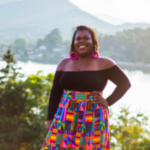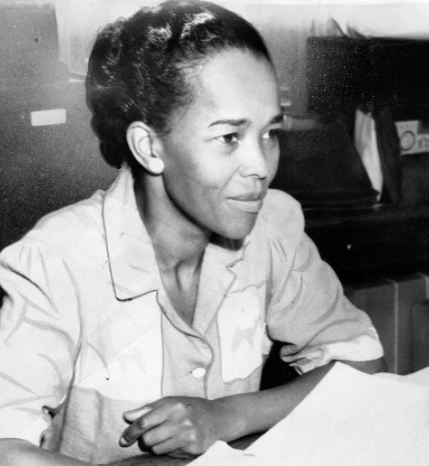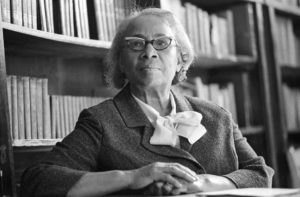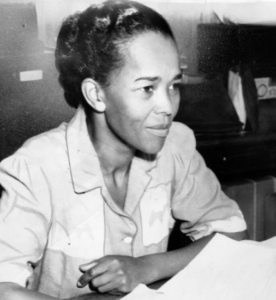It is safe to say, only a few days into February, that 2021 has been a momentous year for Black women. A Black and South Asian woman, Kamala Harris, has risen to the second highest office in the land. Similarly, Stacey Abrams has been receiving much deserved accolades for her mobilization of the vote in the south. Black women, Alicia Garza, Opal Tometi, and Patrisse Cullors started the Black Likes Matter Movement (nominated for a Nobel Peace Prize), and Tarana Burke, a Black woman, started the #MeToo movement. Being Black and Woman is hard in a white-supremacist, patriarchal society. In 1937, in Their Eyes Were Watching God, Zora Neal Hurston explicated Black women are the mules of the world. Black women lead the work that challenges our country to be better. Black women are often our moral compass.
While Black women occupy this space of mystic superpowers and reverence, our foremothers are often less heralded than our forefathers for the work they have done to shape our nation. While in 2021, we are visible and a known force, we have always been a force, even when we were less visible. In the space permitted here, I cannot do these women the justice a historian would (so please read the detailed records of their lives and contributions in the references below), but I can remind the women of North Carolina to remember the names of three women who walked the streets of Goldsboro, Hendersonville, Hickory, Littleton, and Raleigh –the names of Clark, Baker, and Cotton.
Septima Poinsette Clark (1898-1987) was a native of Charleston, SC but married a North Carolinian from Hickory and worked in Hendersonville after tragedy struck in her personal life and she lost a child. Despite being an educator extraordinaire, Clark was fired from teaching in South Carolina because of her membership in the NAACP. Clark was fighting educational battles, such as getting Charleston to hire Black teachers, before she got involved in voting rights. She was the founder of the Citizenship Schools, which she described as an experiment that she was not sure would work. Her fears were relieved when she saw people successfully registering to vote after attending the workshops. These citizenship school workshops started at Highlander Folk School and later moved its home to the Southern Christian Leadership Conference (SCLC). The citizenship schools were training grounds for activists. While everyone saw (or read about) Rosa Park’s iconic arrest, what is less known is that she attended Clark’s workshop just a few months before it happened. Clark’s citizenship schools, which trained people who went and trained others all over the South, were designed to discover and develop local leaders. Clark saw an undeniable link between literacy and liberation. When interviewed about her work, she spoke of her contemporary, Ella Baker saying:
I knew Ella Baker real well. I met her in Tennessee. I don’t really feel that there would have been a big difference in [our work]. Mine though, had to do with teaching people to read and write first. I think she was trying to get over to them to become first-class citizens without reading and writing.
Ella Jo Baker (1903-1986) was born in Norfolk, Virginia and raised in Littleton, NC. She is an alumna of Shaw University where one can see a mural of her likeness painted on Blount Street near campus. She is considered the godmother of the Civil Rights Movement and the midwife of SNCC. She was a behind the scenes leader and helped facilitate the founding of SNCC by mentoring the students. She was an activist and organizer for more than a half of a century in more than 30 organizations, who proudly proclaimed, “I was never working for an organization. I have always tried to work for a cause. And the cause was bigger than any organization” (Ransby, 2003, p. 281). Robert Moses and Bernice Regan Johnson referred to Baker as “Fundi,” “a Swahili term for a person who has expertise valued by society, and who passes his or her art to the young by example and instruction” (DaLaure, 2008, p.2). Like Clark, Baker was a teacher (though not in a classroom) and she was known for being personable and acknowledging the humanity of those fighting for freedom. She was also known for speaking up against the patriarchy and male centric leadership in male dominated civil rights organizations.
Dorothy F. Cotton (1930-2018) recounts when she first joined the SCLC Ella Baker’s discontent with the chauvinistic atmosphere. She said Miss Baker would speak up whereas most of the other women accepted the behavior as “just the way things were.” he goes on to remember that “Enjoying a beer with Ella Baker was a rare and pleasant moment of relaxation in the midst of our social change struggle; I was grateful for her presence, for I could see and feel her wisdom, her consciousness, and learn from her experience” (Cotton, 2018, p. 95). Cotton was born in Goldsboro, NC and also attended Shaw University. While she began as an administrative assistant in the SCLC, she would become the Director of the Citizenship Education Program (CEP) (working alongside Clark). The name changed from citizenship school to CEP when the SCLC took it over. As a younger woman in the movement, Cotton got the opportunity to be mentored by both Baker and Clark. Once when discouraged over the lack of response in one community, Cotton went to Clark for advice, and Clark told her, “You are troubled as I was many years ago about broken verbs… Now I am deeply concerned about broken promises…the broken verb participant never becomes the broken promise participant” (Charron, 2009, p.310). In this exchange, Clark pointed Cotton to the potential for leadership in the ordinary people. Cotton described the Citizenship Education Program as “the base upon which much of the civil rights movement was built” (p. 118) and that the program untaught internalized oppression and combatted Black people “living out of a deficit of consciousness of who they were” (p.117).
Our NC State Toast says we are a state where the weak grow strong and the strong grow great. I am not sure NC can boast of being responsible for the work of these women, but we are direct beneficiaries of the fruit of their labor. And these women showed us how, through education and organizing, to transform the weak into the great. So, in this time, where our nation seems fragile and the voices of the many seem drowned out by the loudness of a few, we do not have to wait for the next charismatic leader. There is power in the collective and we have a blueprint for how to harness it:
As Clark said:
I don’t think that in a community I need to go down to city hall and talk; I think I train the people in that community to do their own talking. (Charron & Cline, 2010, p. 48)
As Baker said
You and I cannot be free in America — or anywhere else where there is capitalism and imperialism — until we can get people to recognize that they themselves have to make the struggle and have to make the fight for freedom every day in the year, every year, until they win it. (in 1974 at the Puerto Rico Solidarity Rally)
As Cotton said
We planned… to help people discover their capacity to solve their individual and communal problems. (Cotton, 2018, p.112).
Let us heed their instruction.
Charron, K. M. (2009). Freedom’s teacher: The life of Septima Clark. UNC Press.
Charron, K. M., & Cline, D. P. (2010). “I train people to do their own talking” Septima Clark and women in the Civil Rights Movement from interviews by Jacquelyn Dowd Hall and Eugene P. Walker. Southern Cultures, 16(2), 31-52.
Clark, S. P. (1964). Literacy and liberation. Freedomways. 4(1), 113-124.
Collier-Thomas, B., & Franklin, V.P. (2001). Sisters in the struggle: African American women in the Civil Rights-Black Power Movement. NYU Press.
Cotton, D. F. (2012). If your back’s not bent: The role of the Citizenship Education Program in the Civil Rights Movement. Atria.
DeLaure, M. B. (2008). Planting seeds of change: Ella Baker’s radical rhetoric. Women’s Studies in Communication 31(1), p. 1-28.
Gyant, L., & Atwater, D. F. (1996). Septima Clark’s rhetorical and ethnic legacy: Message of citizenship in the civil rights movement. Journal of Black Studies. 26(5), p. 577-592.
Payne, C. (1989). Ella Baker and models of social change. Signs 14(4), 885-889.
Peaceable Power. (2017, March 1). Ella Baker: Making the Struggle Everyday [Video]. Youtube https://www.youtube.com/watch?v=t96fnyLMihA
Ransby, B. (2001). Behind-the-scenes view of a behind-the-scenes organizer: The roots of Ella Baker’s political passions. In B. Collier-Thomas & V. P. Franklin (Eds.), Sisters in the struggle: African American women in the Civil Rights-Black Power Movement. (pp. 42-57). New York University Press.
Ransby, B. (2003). Ella Baker and the Black freedom movement. UNC Press.
Rouse, J. A. (2001). “We seek to know… in order to speak the truth” Nurturing seeds of discontent—Septima Clark and participatory leadership. In B. Collier-Thomas & V. P. Franklin (Eds.), Sisters in the struggle: African American women in the Civil Rights-Black Power Movement. (pp. 95-120). New York University Press.
 Brandi Hinnant-Crawford is an Associate Professor of Educational Research at Western Carolina University. She is a native of Goldsboro, NC and currently lives in Waynesville, NC with her 8-year-old twins Elizabeth Freedom and Elijah Justice.
Brandi Hinnant-Crawford is an Associate Professor of Educational Research at Western Carolina University. She is a native of Goldsboro, NC and currently lives in Waynesville, NC with her 8-year-old twins Elizabeth Freedom and Elijah Justice.




There are no comments
Add yours